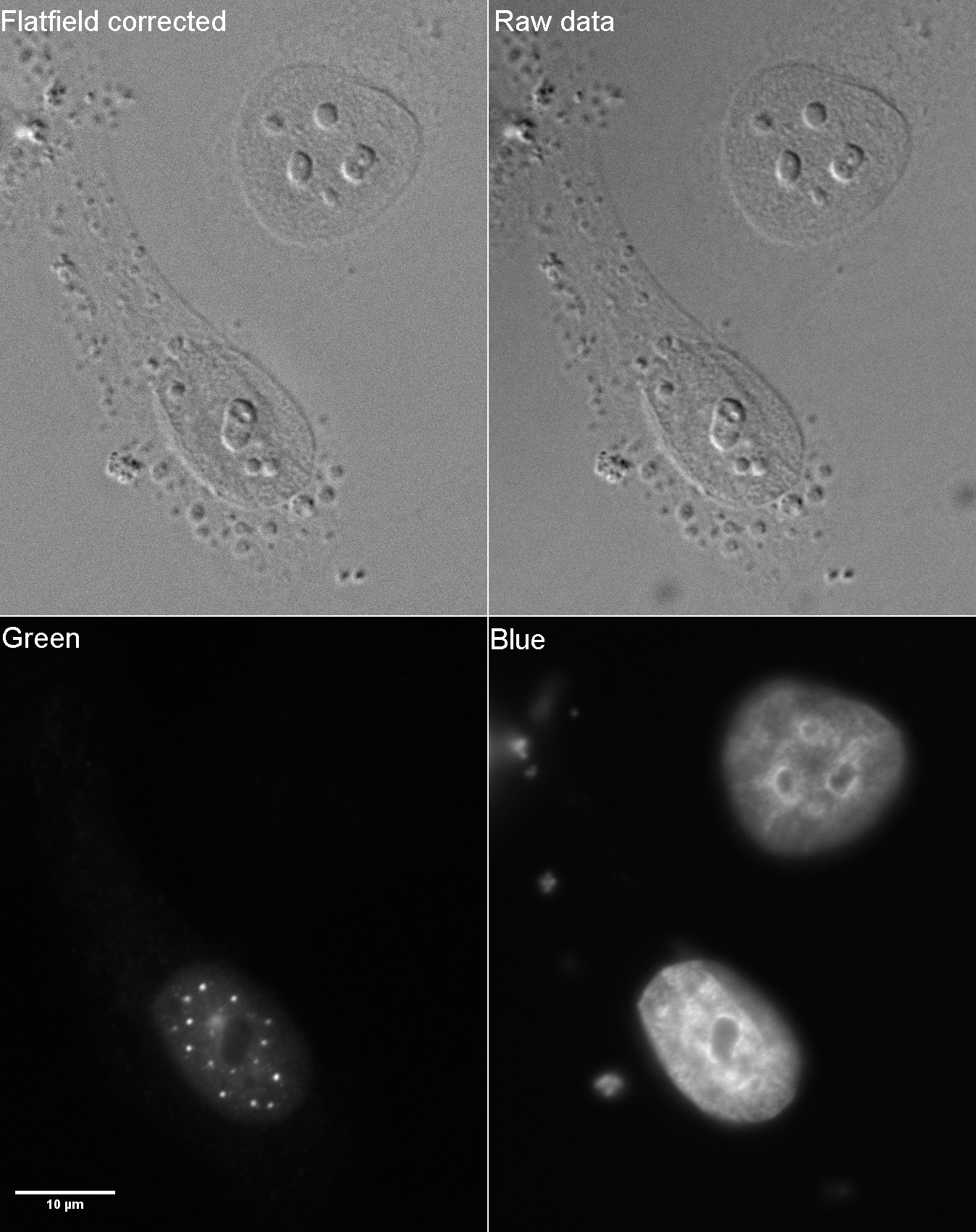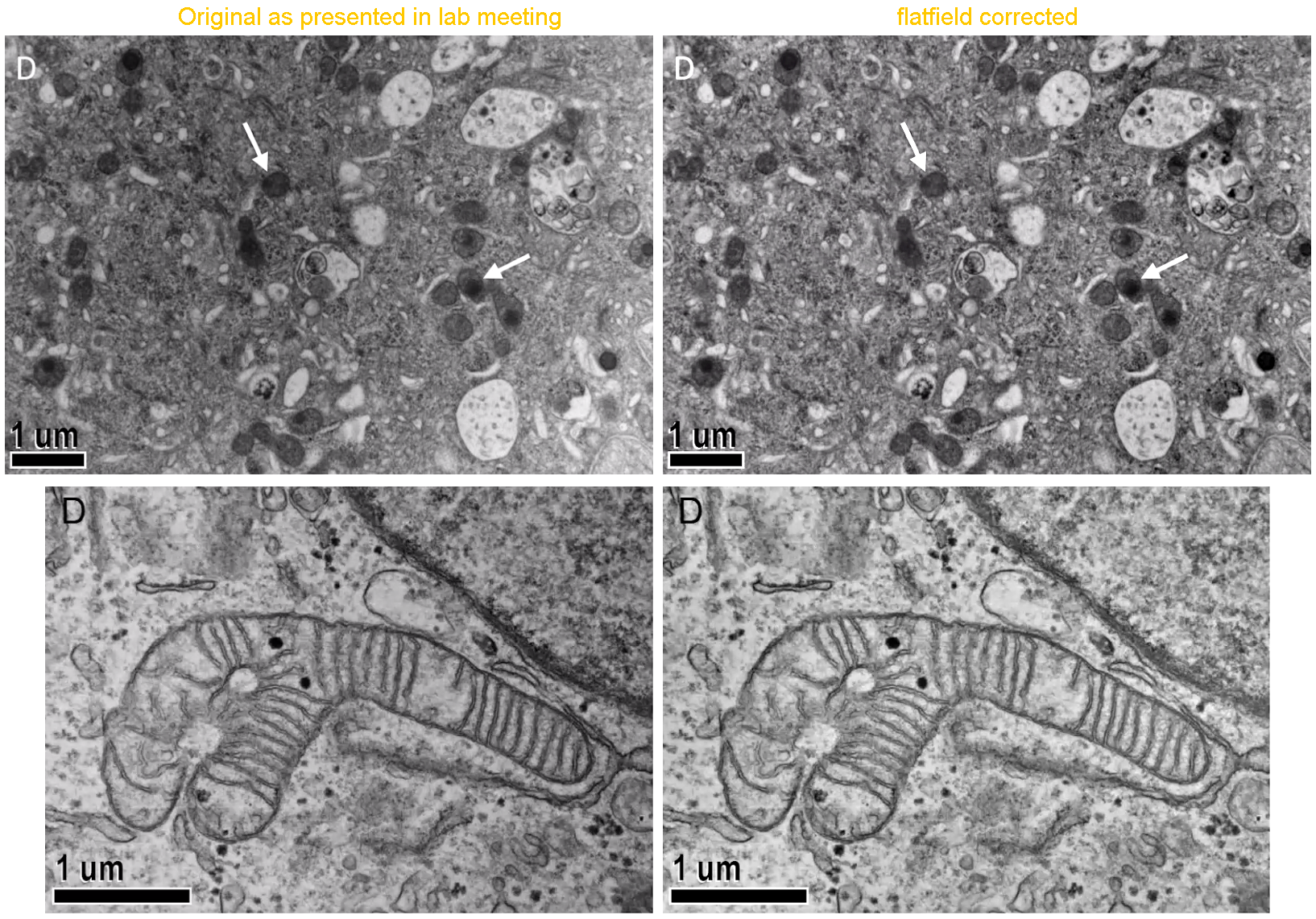
(Image available at 2X zoom if you download it.)
Flatfield correction.
Useful for increasing contrast of very low contrast features and for cleaning up garbage in the optics.
Some image collection software has this in live mode. I prefer to do it in post processing.
You need a background image. This is usually the sample out of focus but can be a blank dish or mounted slide with no sample, but the fluid in the dish must be the same depth or the mounted sample must have same mounting media etc as the biological sample. I like to take 4 to 16 images and average them. For the example below, setting the system to take a time lapse and then moving the sample as the images are collected, then avergaing the stack of out of focus images collected at different times, useually produces a good background image.
In focus images are divided by the background image. Pixels that are the same in both images result in pixels with the value 1. variations are amplified.
Note that the dust spots in the lower right and the gradient from upper left corner to loer right corner are gone after division.

(Image available at 2X zoom if you download it.)
In the following example to show enhancement of low contrast features, I made a new 8 bits ramp image which is the background. Then I introduced drawings elements onto the background image that are one intensity value over the background. This is the sample.

(Image available at 2X zoom if you download it.)
Want to try this. Raw data here: bg.tif and sample.tif
This is useful in biological microscopy for imaging very low contrast images, such as unlabeled microtubule assays where Nomarski imaging is used to watch MTs sliding on coated glass or beads or other cargo moving on MTs. (I first did this in 1993 using Image1/AT with a Newvicon video camera based on a Michael Sheetz paper, probably from 1989.)
Flatfield correction is also is useful for correcting uneven illumination or out of focus imperfections (e.g. dust) in the optics.
Background images may also be sample images, preferrably a few, that are not out of focus but are averaged together and have a large Gaussian blur or mdeian filter applied.
Background images may also be mathematically defined.
Both of these methods do not remove small imperfections but may correct lower frequency gradients.
Another method that works for this if FFT filtering with a large filter size, such as 256, 512, or larger.
Flatfield correction even works on screensnaps in Zoom or Webex presentations. The example below of transmission electron micrographs (TEMs) was screen snapped in a Zoom presentation in late 2020 and FFT filtered for a uniform contrast corner to corner. Distracting and artefactual low frequency variations were removed making it easier to see the relevant high frquency features.
